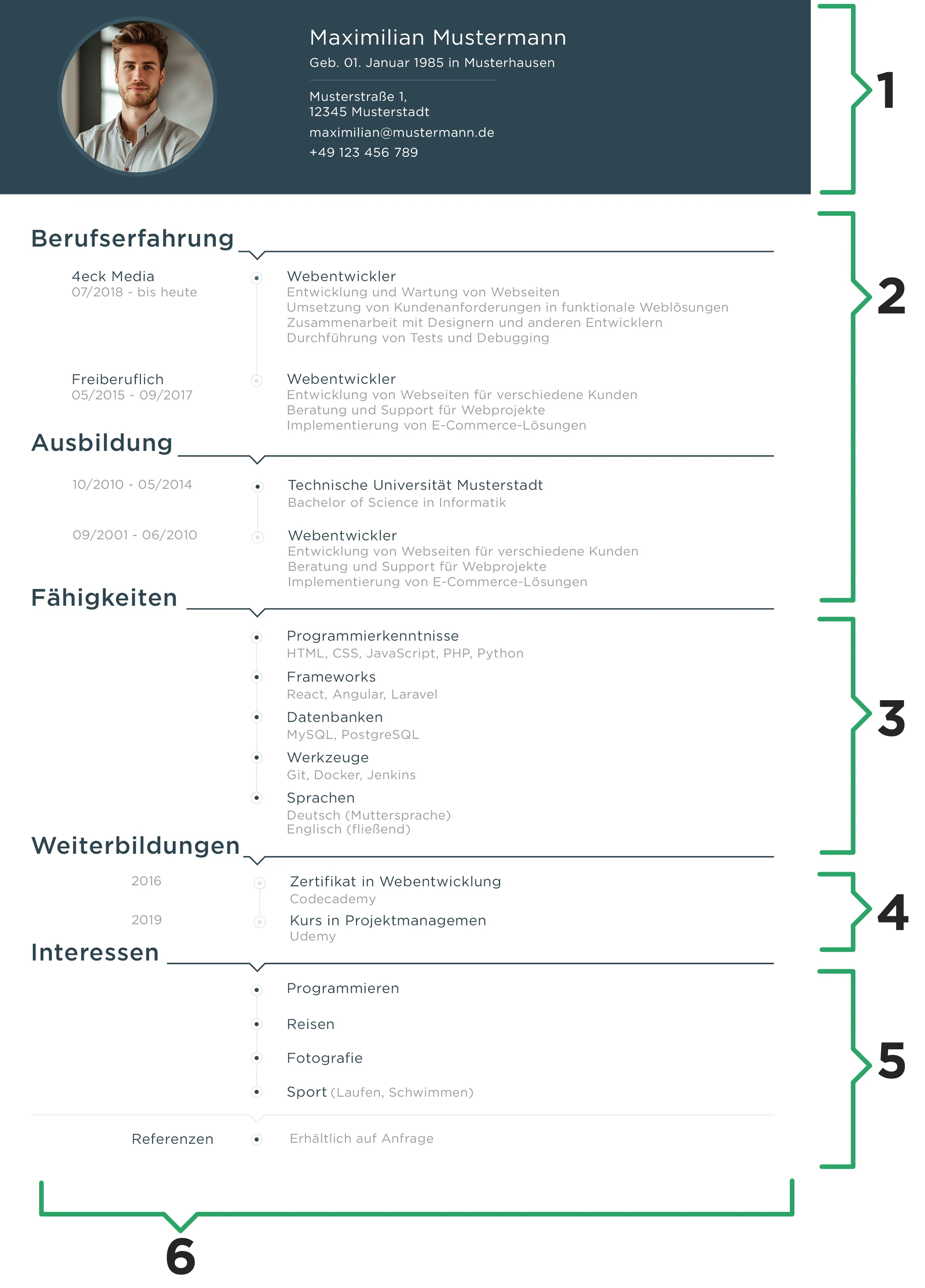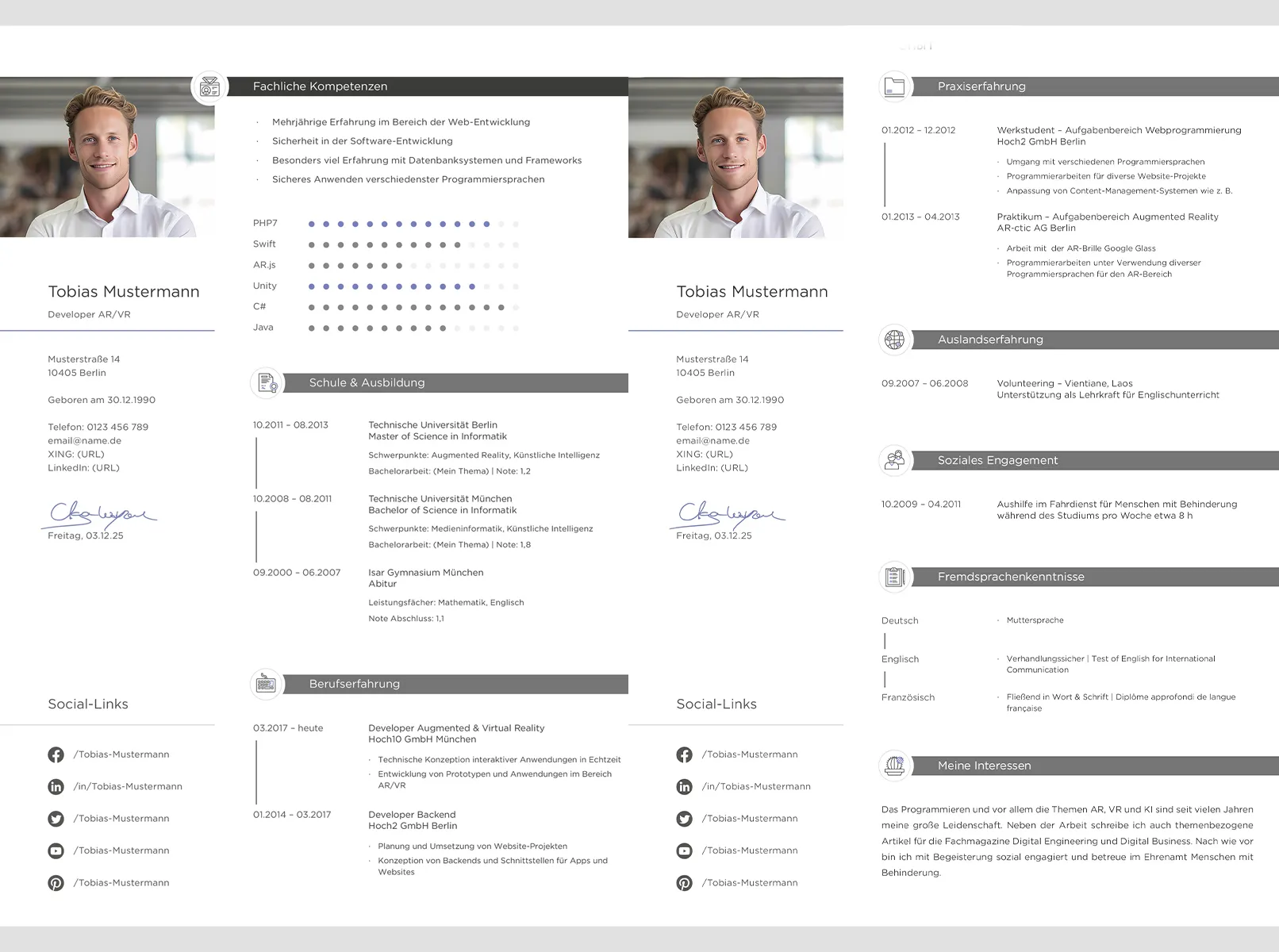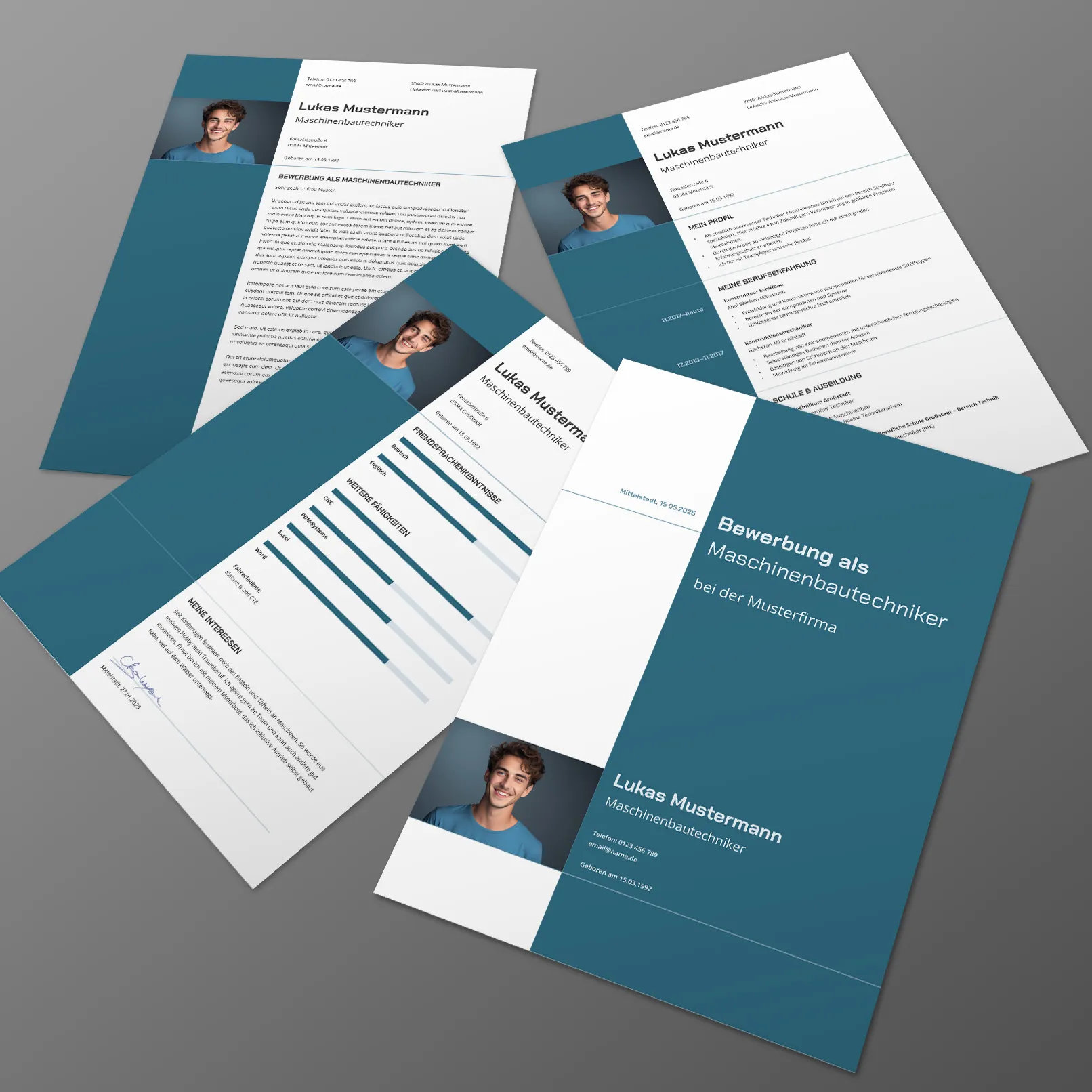German CV: Special features, structure, free download
A successful job search in Germany requires you to have a well-structured CV that meets the standards of the local job market. This document is crucial for presenting your professional achievements, experience and skills to potential employers. In this article, I will explain the specifics of the German CV , its structure and give you links to free templates that will help you create the perfect document for your job search self-presentation.

Table of contents
Special features of the German CV
The German CV has its own unique features that set it apart from CVs in other countries. Firstly, it tends to be more precise and structured. Employers in Germany expect clear information about your education, work experience and skills. The CV should be understandable and easy to read, so it is important to adhere to certain standards and recommendations.
One of the most important features of the German CV is its brevity. It usually consists of one to two A4 pages, on which the information is presented concisely and clearly. Superfluous details that are not relevant to the position you are applying for should be avoided.
Another important feature is the photo. In Germany, it is customary to include a professional photo in the CV. The photo should be taken against a neutral background that does not distract from the face and should reflect an official, business style. It helps to give a positive first impression of you as a candidate and can often be decisive in whether you are invited to an interview. Nowadays, applications are also sent without a photo and some companies even want applicants not to include a photo. However, most companies still appreciate it.
In addition, the German CV includes sections with personal details, education, work experience, skills and additional information such as interests and hobbies. It is important to fill out each of these sections carefully in order to make a good impression on potential employers.
Structure of the German CV
The correct structure of a CV makes it understandable and logical. Compliance with certain standards in structuring the information will help the employer to quickly find all the necessary data about you and assess your suitability for the advertised position. Let's look at the main sections that must be included in a German CV and how to fill them out correctly.

- Personal details
- Work experience and education
- Knowledge and skills
- Further education
- Interests and hobbies
- No more than two pages
Personal details
This section contains your full name, address, telephone number and e-mail address. It is important that this information is up to date and correct as the employer will use it for further contact. This section often also includes your date and place of birth, which is common in Germany.
Personal details are crucial as they allow you to be contacted for further steps in the selection process. Only provide up-to-date information and make sure that all contact details are spelled correctly. An error in the phone number or email address could cause you to miss out on an opportunity.
Professional experience and education
The work experience section is one of the most important parts of the CV. It contains information about your previous jobs, tasks and achievements. It is important that you include the relevant details for each position:
- Company name
- position
- Work period
- Main tasks
Highlight specific achievements by using facts and figures to show your efficiency. Work experience shows the potential employer your practical skills and competencies. It is important to emphasize those achievements that could be relevant to the new position. Use specific examples to show how you achieved results and the methods you used.
The education section contains information about all the educational institutions you have attended, as well as the degrees and specializations you have obtained. Important details are:
- Names of the educational institutions
- Dates of study
- Fields of specialization
- Diplomas received
The education section shows the employer your academic preparation and the potential level of your knowledge.

Skills and competencies
In this section, you should list both professional and personal skills that are relevant to the position you are applying for. These include technical skills, language skills, leadership skills or teamwork. It is important to indicate the level of each skill so that the viewer of your application gets a complete picture of your capabilities.
Skills and competencies help the recruiter assess your suitability for the job requirements. Only include skills that are directly related to the position you are applying for to avoid cluttering your resume with unnecessary information.
Continuing education
This section should demonstrate your commitment to continuous learning and development. Include information about additional courses, trainings, certificates and other forms of professional development you have completed. Include the names of the courses, the organizers, dates of attendance and certificates or confirmations of successful completion received. Briefly describe the main topics and skills you have acquired during this training.
Continuing education shows the employer that you are constantly working on your professional progress and are ready for new challenges. This also speaks to your adaptability and willingness to change.
German CV includes interests and hobbies
This section provides additional information about your personality outside of the professional sphere. You can list your interests and hobbies here, but only those that could be relevant to the job or show your soft skills such as teamwork, leadership or creativity. Be honest when stating your interests and hobbies and avoid general statements such as listening to music. Not every hobby should be mentioned. If you like to play poker, keep it to yourself. If you run marathons, it's worth mentioning.
Interests and hobbies can help paint a more complete picture of you as a person. They show your additional qualities and can be useful in making a positive impression on employers.
Special features when filling out
Filling out a German CV requires attention to detail and adherence to certain standards. Above all, use clear and professional language. Avoid slang and informal expressions. Structure the information logically, starting with the most recent achievements and working your way to the older ones.
It is also important to pay attention to spelling and grammar. Misspelled words or grammatical errors can give a negative impression of you as a candidate. Therefore, use spell check and, if possible, ask someone to proofread your CV before sending it.
Use ready-made, professional CV templates
To create a professional and stylish CV, you can use ready-made templates. These will help you save time and ensure that all standards are met. Ready-made templates already have a ready-made structure and design, which makes the document creation process much easier.
On the TutKit.com portal, you will always find a wide selection of free resume templates. Download them and use them to create your perfect document. This solution will significantly increase your chances of success in your job search.
Conclusion
A properly created German CV is the key to success in your job search. By following the recommendations above and using our ready-made templates, you can create a professional and appealing document that will attract the attention of employers and make you stand out from other candidates. Remember that attention to detail and accuracy in the presentation of information play an important role in making a positive impression of you as a candidate. Show the well-known German thoroughness when writing your CV.

From Vitalii Shynakov
